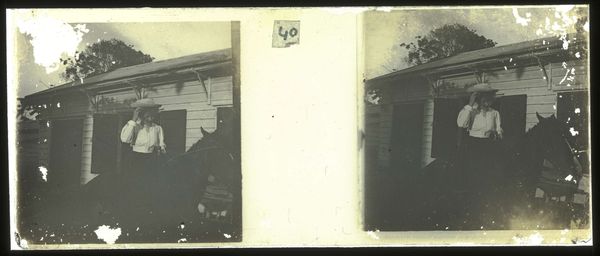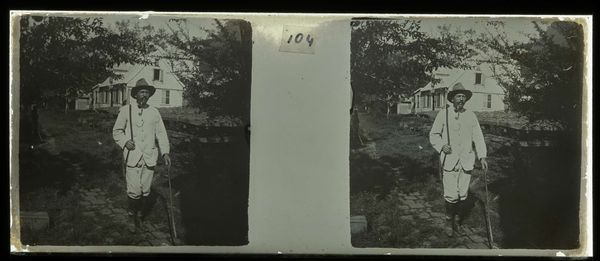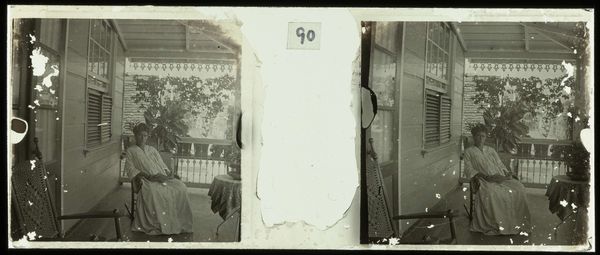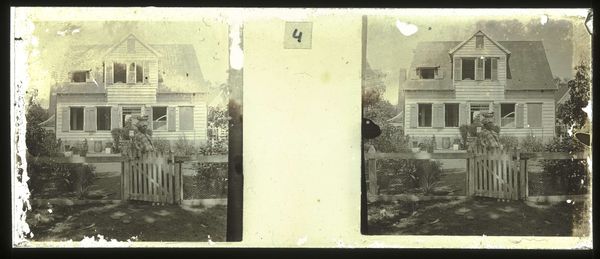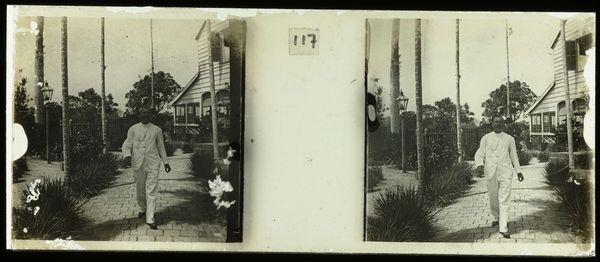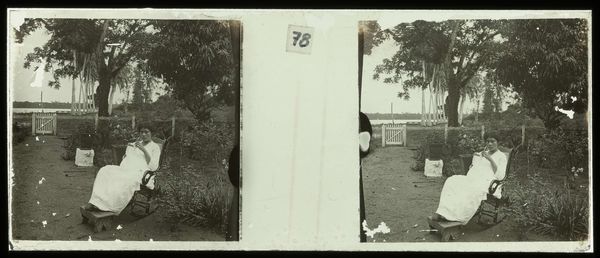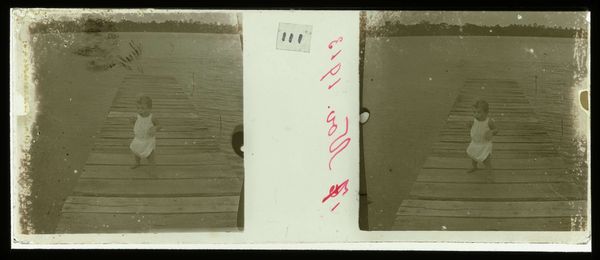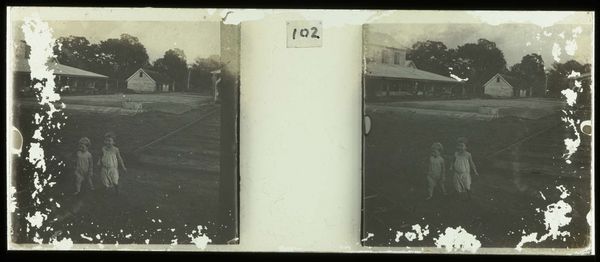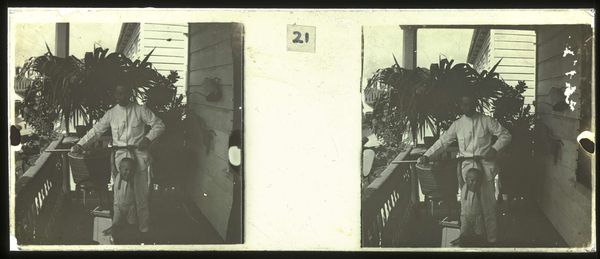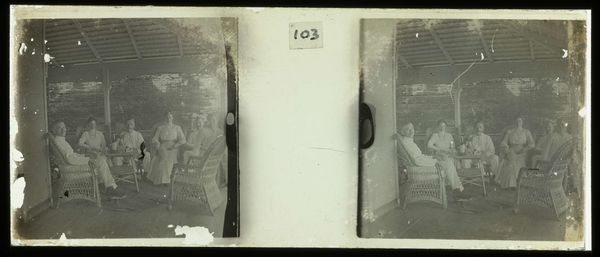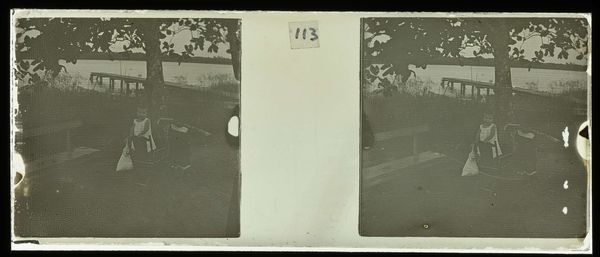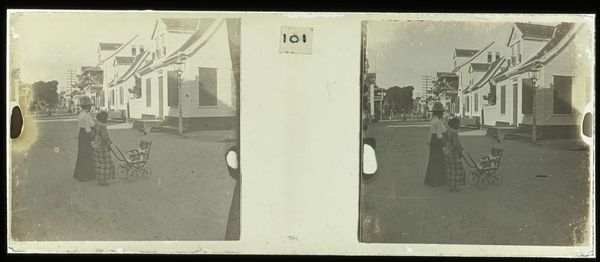
photography, gelatin-silver-print
#
portrait
#
landscape
#
photography
#
gelatin-silver-print
#
realism
Dimensions: height 4.5 cm, width 10.5 cm
Copyright: Rijks Museum: Open Domain
Curator: This gelatin silver print, taken sometime between 1913 and 1930, is titled “Theodoor Brouwers op plantage Accaribo.” It currently resides here at the Rijksmuseum. Editor: My first impression is bleak, almost haunted. The house seems deserted, the figure swallowed by shadow. It evokes a sense of profound isolation, doesn't it? Curator: Indeed. The printmaking process here is key. The gelatin silver process, refined during this era, allowed for mass production and dissemination of images. But in rendering, as here, we get this incredible detail and range of tonal value. We also can see deterioration over time. You can tell that the technology has contributed to what might be seen as the picture’s spooky ambiance. Editor: Absolutely. There's something beautiful and tragic in that decay. And I find myself wondering about Theodoor Brouwers. What was his relationship to the plantation? The picture raises more questions than it answers, which I love. The composition has this almost brutal simplicity. The boxy shape of the house echoing the stark posture of the person that we see. Curator: I’m sure you noticed too that we only have a hint about this man’s life: Accaribo. Looking into that, we can ascertain that this was a coffee and cocoa plantation, in Suriname. So what might seem like a detached, even bleak portrait, is in fact embedded in the material realities of labor, colonialism, and the global trade of commodities. The photograph acts as both a portrait and a historical document. Editor: Precisely! It's this convergence of the personal and the historical that makes it so compelling. It transcends the limitations of its time, hinting at deeper narratives about land, power, and the individuals caught within its web. I look again at that boarded-up window—it makes you realize there must be so many unseen people inside there. Curator: A sharp observation. The "landscape with figure," or perhaps even "portrait in landscape," becomes an inquiry into global commodity chain and forced labor. A complex layering we don’t see every day. Editor: The ghosts of history embedded in a fragile silver print—a testament to the enduring power of the unseen, the unsaid. Curator: Indeed, a compelling reminder that a photograph is not just an image, but an object deeply entangled with social and material processes.
Comments
No comments
Be the first to comment and join the conversation on the ultimate creative platform.
